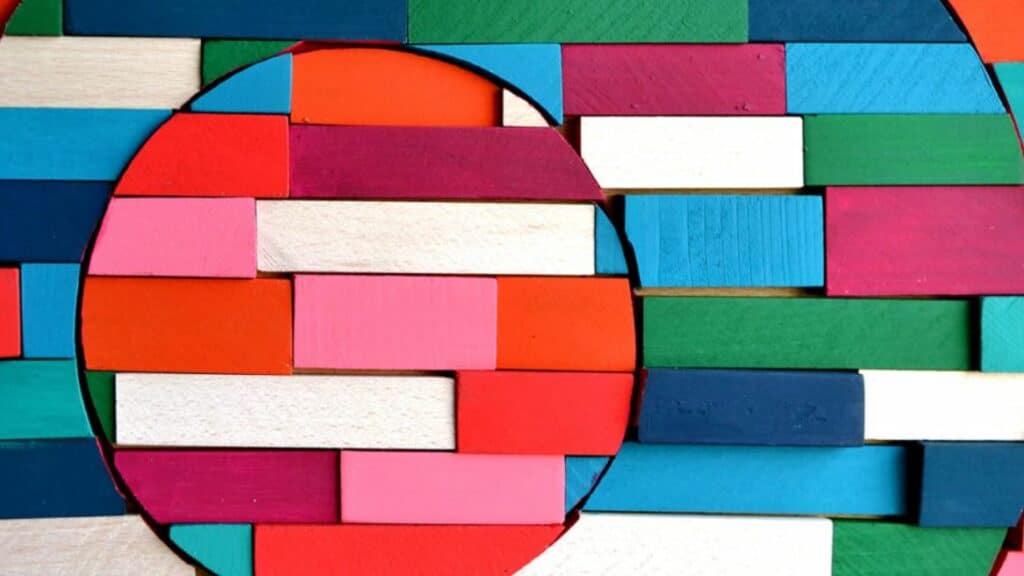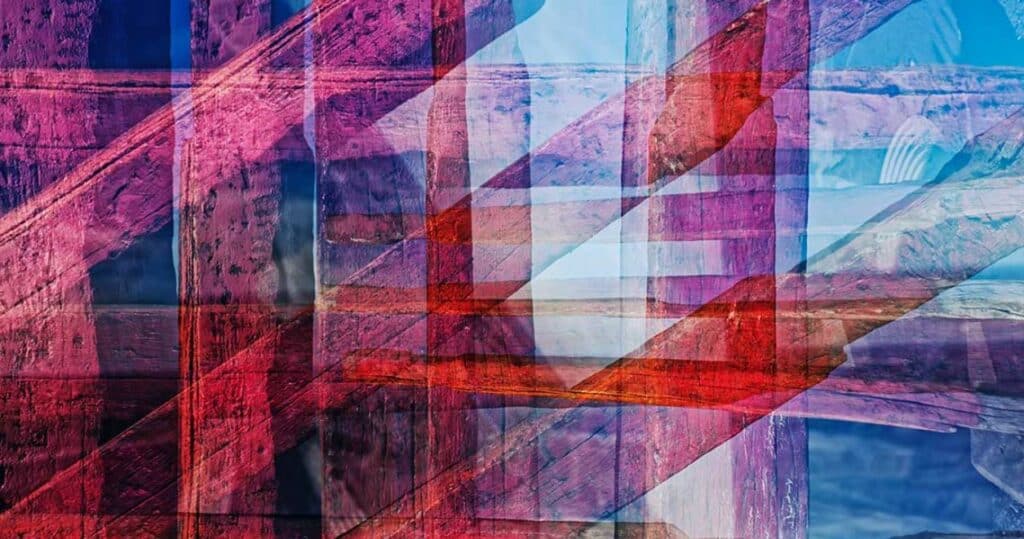We’re going to talk about some great artists today whose work is made up of cool shapes and colours. Look at a picture. Ever notice how it’s made up of many lines, circles, squares, and triangles? That’s what these people do, though! A fancy word for artists who use these forms to make beautiful pictures is “geometric abstraction.”
Every artist does things in their own unique way. You may really enjoy this type of art if you like seeing things that make you think and feel. It’s always been important to have art because it helps us understand the world and talk about important things like being fair and kind. Let’s take a look at what these artists have made!
read more: 10 Famous Ceramic Artists : you should know
list of 10 Geometric Abstraction Artists You Should Know
Ten artists in this group like to use squares, circles, and triangles in their work. Every artist does things in their own unique way. The forms in their art are really cool. Picture lovers enjoy looking at their works a great deal.
Wassily Kandinsky

Key Profile
- Pioneer of abstract art.
- Known for his use of color and form to evoke emotions.
- Founded the influential art group “Der Blaue Reiter”
Artist Wassily Kandinsky was really cool. He loved using colour and shape to make people feel different things. In 1911, he wrote a book called “Concerning the Spiritual in Art.” In it, he talked about how art is more than just drawing what you see. He believed that art could move people deeply, like in their heart or soul.
“Composition VII” from 1913 is a well-known work of his. It has lots of bright colours and forms that move around. You might feel happy or excited when you look at it, like you’re in a beautiful world. The art of Kandinsky is like a magical doorway that lets you feel all kinds of things without saying a word. He really knows how to make drawings that make your heart sing!
Piet Mondrian

Key Profile
- A leading figure in the De Stijl movement.
- Famous for his grid-based abstract paintings with primary colors and black lines.
- Emphasized simplicity and harmony in his work.
The artist Piet Mondrian liked to use bright colours and simple shapes in his work. He didn’t paint people or animals. Instead, he used main colours like red, blue, and yellow, as well as squares and shapes. “Composition with Red, Blue, and Yellow” is the name of his most well-known picture. It looks like a bunch of circles and squares put together.
Mondrian thought that art should show balance and unity. To make art that made people feel calm and happy, he thought, he would use simple shapes and colours. “Neoplasticism” was the name of his style of art. Putting shapes and colours together to show how well they fit is like putting together a puzzle.
Kazimir Malevich

Key Profile
- Founder of the Suprematism movement.
- Known for his geometric abstract paintings, particularly the iconic “Black Square” (1915).
- Advocated for art’s spiritual qualities over representationalism.
A long time ago, Kazimir Malevich was a really cool Russian artist. He didn’t paint people or houses. What he did instead was paint with shapes like circles and squares. It was his goal to show that art isn’t always what we see in the real world. The name of one of his most well-known works is “Black Square.” There is only a black square on a white background.
Some people may find it strange, but for Malevich, it was like a magic door to a world where art is very important. He thought that looking at his art could make you feel like you were floating in the sky. It’s not just shapes that you see in his works; they make you feel something special.
Sophie Taeuber-Arp

Key Profile
- Multifaceted artist associated with Dadaism and Constructivism.
- Known for her abstract paintings, textile designs, and avant-garde dance.
- Contributed significantly to the development of modern art.
As an artist, Sophie Taeuber-Arp was really cool! She liked making art that didn’t always look like real life. Instead, she made art with lines and shapes. She didn’t just do one type of art; she painted, sculpted, and even designed clothes! Another unique thing about Sophie’s art was that she wanted it to be used in real life. To her, art shouldn’t just be in fancy museums.
She thought it should be everywhere, even in the things we use every day. Sophia’s husband Hans Arp helped her with some of her art projects. They worked together to make cool things that mixed flat shapes with useful things like furniture. Sophie liked to try new things with her art and use her imagination to make the world more interesting.
Frank Stella

Key Profile
- Prominent figure in Minimalism and Post-Painterly Abstraction.
- Notable for his geometric, often monochromatic, paintings.
- Experimented with unconventional materials and forms.
He changed the way people thought about drawing after the war. His name was Frank Stella. He wasn’t like the other painters. He only used one colour and made the surface of his works very flat. Other painters used a lot of colours and sloppy brushstrokes.
Shapes like circles and squares were used in his art to make it look neat and unique. In later years, he began to use a lot of bright colours and interesting designs in his art. It’s still cool to look at his works because they make you think about things in a new way.
Bridget Riley

Key Profile
- Leading figure in Op Art.
- Known for her optical illusion paintings that create visual movement and distortion.
- Influenced by the study of perception and color theory.
You can almost feel the movement in Bridget Riley’s drawings. A lot of shapes and colours are used to make it look like things are moving and changing right in front of your eyes. In her famous picture “Fall,” she uses shapes to make it look like the things in the painting are moving. Great, Riley’s drawings do more than just look good; they make you think about how you see things.
Theo van Doesburg

Key Profile
- Co-founder of the De Stijl movement.
- Advocated for pure abstraction and geometric composition.
- Promoted the idea of art’s integration with architecture and design.
A group of artists called the Dutch De Stijl had a star artist named Theo van Doesburg. He liked putting together simple shapes and colours that looked good with other things in art, houses, and designs. It was called “The Principles of Neo-Plastic Art” and it was written by him in 1917. It was about how easy art can still be cool. A lot of great buildings and books were made by Van Doesburg and other artists, like Mondrian. Their art was meant to show everyone what a perfect world would look like.
Carmen Herrera

Key Profile
- Cuban-American painter known for her hard-edged geometric abstraction.
- Gained recognition later in life after decades of relative obscurity.
- Revered for her minimalist compositions and bold use of color.
We need to talk about Carmen Herrera! She is a cool painter from Cuba who now lives in the US. She became well-known when she was 90 years old. She uses shapes and colours in a unique way when she paints. It looks like her drawings are very calm and balanced. These works are some of her most important ones.
They are called “Blanco y Verde.” It means “White and Green” in Spanish. She’s great at making pictures that don’t look like real things and using colour well. It shows that art is important no matter what age or place you are from, even if you became famous late in life.
Ellsworth Kelly

Key Profile
- Renowned for his hard-edge painting and minimalist sculptures.
- Emphasized simplicity, form, and color in his work.
- Often drew inspiration from nature and everyday objects.
Thanks, Ellsworth She liked to use bright colours and make simple shapes as an artist. The well-known piece of his art is called “Colour Panels for a Large Wall.” It is bright and has big shapes. I think it’s interesting how shapes fit together and how light and dark change the way things look. His art still makes people feel calm and makes them think a lot. He still inspires artists to make their own cool art.
Victor Vasarely

Key Profile
- Considered the father of Op Art.
- Known for his optical illusion paintings that create depth and movement.
- Experimented with geometric forms and vibrant colors to challenge perception.
Please allow me to talk about Victor Vasarely. He was a painter who made cool pictures that fool your eyes. He did not draw people or animals. Instead, he drew forms and colours that when you look at them seem to move or change. His drawings were very bright and had lots of different shapes, such as circles, squares, and lines.
The way you look at them makes them seem to move or pop out at you! Vasarely’s art works like a magician; they make us see things that aren’t there. People really liked his art because it made them feel like they were somewhere else. He showed us that great art doesn’t have to look like real life.
learn more: 10 Best Martial Arts Weapons and Where They Came From
Verdict
With lines and shapes, these artists made cool pictures. They drew more than just people and animals. Their art makes you think about patterns and shapes. The art they make is so unique and fun! People can get new ideas from it and think about art in new ways.
You can share this list on Facebook and X (Twitter) to let your friends know about these great acts. Let’s get more people interested in this kind of work! Geometric Abstraction and New Artistic Ideas 🎨✨
FAQs
In art, what is geometric abstraction?
Geometric abstraction is a style of art that employs geometric forms such as lines, circles, squares, and triangles to produce non-representational and frequently non-objective compositions. Artists in this genre experiment with the use of exact shapes, colors, and spatial connections to transmit emotions, thoughts, or aesthetic experiences.
What are the distinguishing features of geometric abstraction?
Some important parts of geometric abstraction are using only primary colors, making sure that the shapes are perfectly straight, focusing on composition and space relationships, and making art that does not try to represent anything. Its visual language frequently strives for simplicity and clarity.
Who were some of the geometric abstraction movement’s most influential artists?
Wassily Kandinsky, Piet Mondrian, Kazimir Malevich, Sophie Taeuber-Arp, Frank Stella, Bridget Riley, Theo van Doesburg, Carmen Herrera, Ellsworth Kelly, and Victor Vasarely are among the artists who have influenced geometric abstraction





